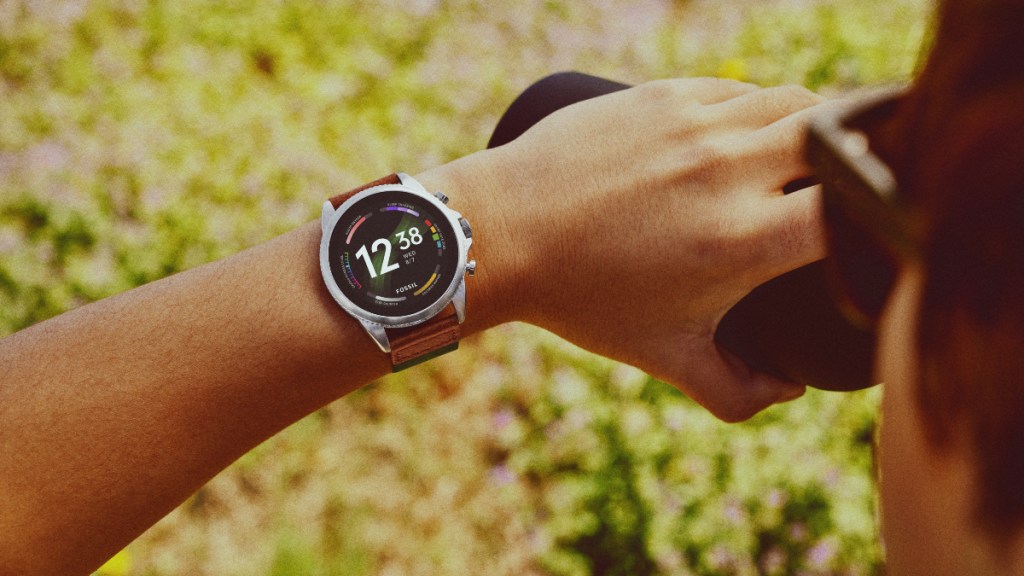Fossil is bowing out of the smartwatch market. But it should come as no surprise for those who’ve been keeping track of how things are shaping and evolving in the space. The writing has been on the wall for some time in fact. Ever since Google partnered with Samsung to give the South Korean giant first or early dibs at new WearOS versions and features, it was only about time that Fossil folded its cards.
What matters is, the American watchmaker was able to put up quite a show in all the many years it was around. And it will always be around. It just won’t be making smartwatches anymore but instead, focus entirely on its core competency— continuing to design more traditional timepieces that have a better chance of withstanding the test of time. Which means the Gen 6 from 2021 will be its swansong.
An interesting thing about it— apart from its exquisite feature set— is that it was the first Fossil smartwatch to launch in India at the same time as global markets. Its maiden smartwatch, the Gen 2, had come almost half a decade back. Time flies.
Getting into the smartwatch space was a concerted strategic decision for Fossil, not a whimsy. Acquiring wearable maker Misfit —that had former Apple CEO John Sculley as one of its co-founders— in 2015 brought the needed head start. But while it had the right mix of technology, it was always about the X-factor with these smartwatches. They looked really, really nice, and different from whatever it is that was going on back then. Fossil was working to its strengths.
“When we looked at the landscape at that point of time, for connected watches, there was a lot of technology input, but I don’t think people really looked at it from the point of view of a fashion accessory,” Fossil India managing director Johnson Verghese told me in this exclusive FE.com interview from 2021, adding “if you ask us, what it is that we bring to the table that is different from anybody else, I think we understand the ethos of fashion.”
And it knew how to sell fashion. Not many are probably aware that Fossil has had a profound effect on how smartwatches are sold today. Department stores were not typical avenues where you could pick up a smartwatch back in the day for instance. Fossil brought smartwatches to that vertical and a lot of the top watch retailers — large chains— got their first experience with smartwatches with the company. Fossil knew it had a good product and it wanted to get it out to as many hands as possible, through as many distribution channels as possible.
The Gen 6 was the world’s first smartwatch with the Qualcomm Snapdragon Wear 4100 Plus processor that brought conveniences like full colour and full featured ambient mode watch faces, alongside performance gains. It had Bluetooth 5.0 and quick charging. Wellness upgrades included a new SpO2 sensor for tracking blood oxygen saturation levels, auto activity generation, and improved heart rate monitoring (designed to work well even when the watch was loosely fitted). Lack of cellular was a curios omission. But Fossil had bigger problems.
Around the same time, Google had entered into a partnership with Samsung giving it first and exclusive access to WearOS 3. As expected, everyone else, including Fossil, was next in line and made to wait for the “latest” software which meant the Gen 6 was forced to launch with the “older” WearOS 2. WearOS 3 was rolled out almost a year later. And when it was time for WearOS 4, these smartwatches were getting WearOS 3.5. Even though anybody could sense the threat that was looming, Verghese seemed confident about Fossil’s “strong” relationship with Google and even stronger relationship with its consumers.
“Each generation that we’ve brought into the market has been more successful than the previous generation. I believe consumers are confident that we offer a unique proposition. The fact that we are WearOS 3 ready, our consumers are strongly supportive of that,” he had reiterated.
But with no new smartwatch showing up since then, aside from some wellness editions which were essentially the Gen 6 with WearOS 3 and a few other tweaks, you can say— now— that it was the beginning of the end.
In a statement shared with the Verge, Fossil spokesperson Amanda Castelli said, “As the smartwatch landscape has evolved significantly over the past few years, we have made the strategic decision to exit the smartwatch business. As for what’s coming, “Fossil Group is redirecting resources to support our core strength and the core segments of our business that continue to provide strong growth opportunities for us: designing and distributing exciting traditional watches, jewelry, and leather goods under our own as well as licensed brand names” and what’s in store for existing Fossil smartwatches, the company intends to keep them updated “for the next few years.”
Fossil’s exit from the smartwatch market means a twin blow for buyers. Not only does it mean Samsung gets to be their only go-to big brand (not counting Google here because of sporadic availability and limited portfolio), it also means far fewer options in terms of design and styling. At the same time, the development is a stark reminder of how ecosystems and partnerships will drive sales and growth, and potentially consumer buying decisions, in the future.
Follow FE Tech Bytes on Twitter, Instagram, LinkedIn, Facebook.








